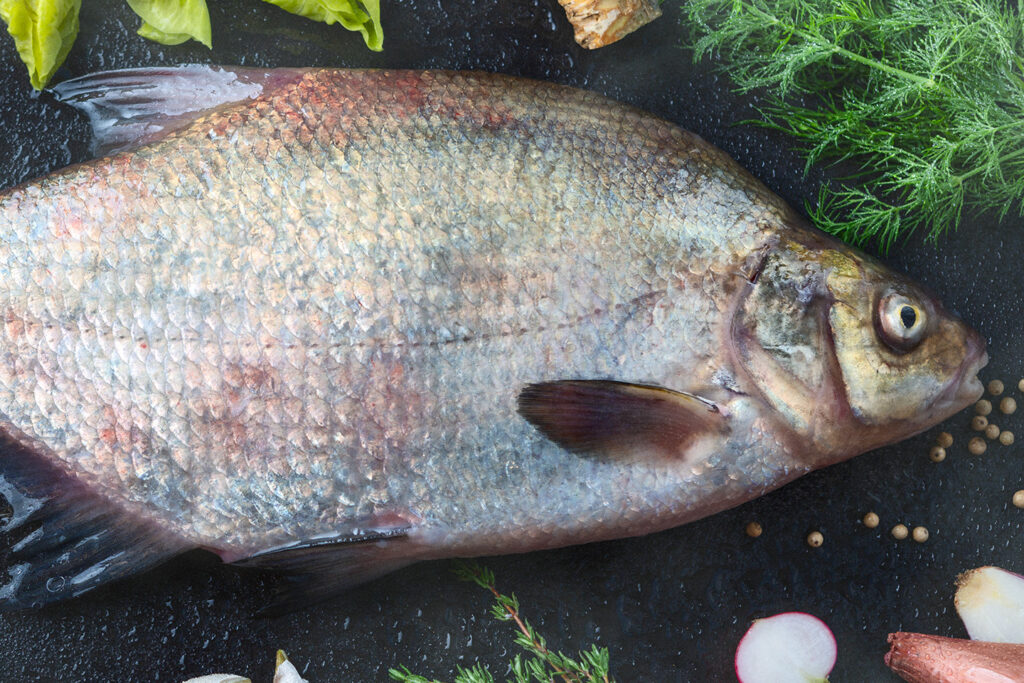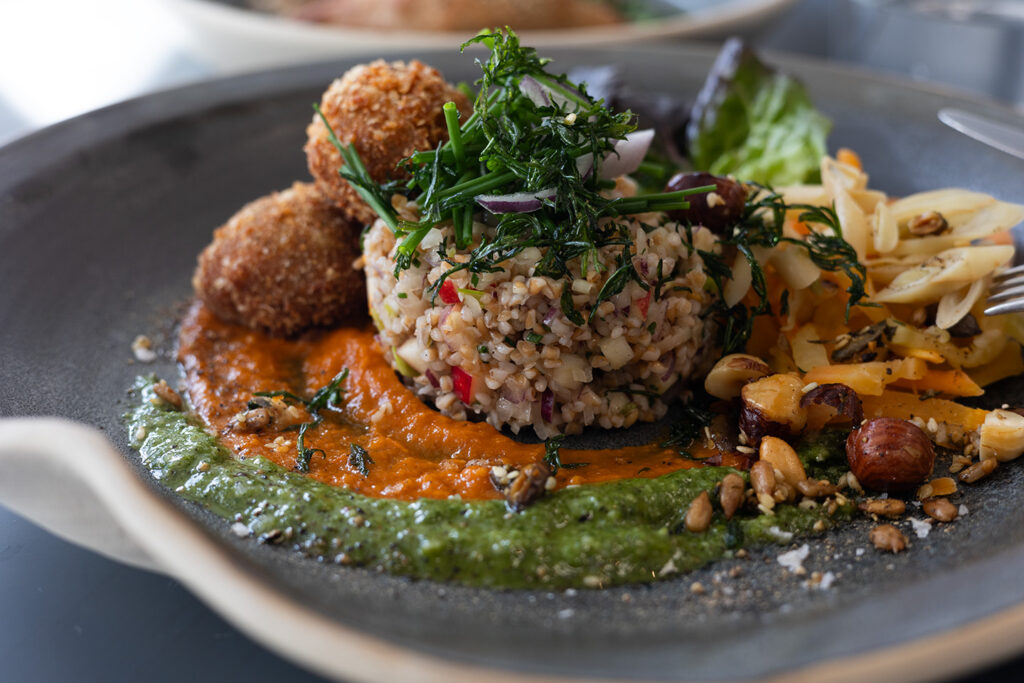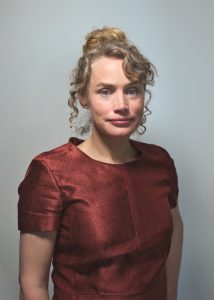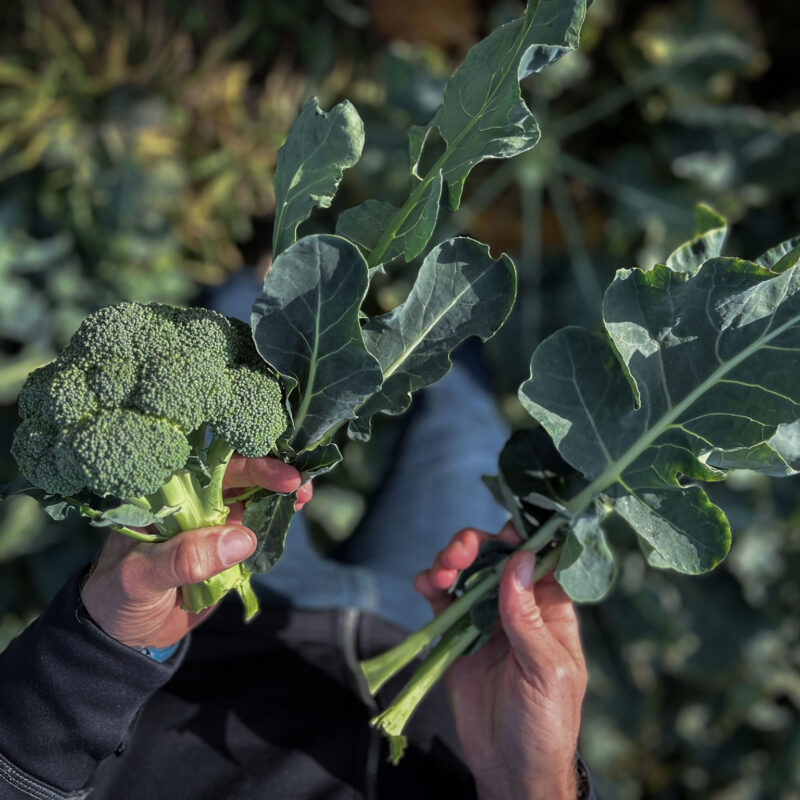Smart Swedish Seafood – the Entire Catch on the Plate
Despite having a long coastline and hundreds of lakes, the majority of fish consumed in Sweden is imported, nearly 75%. The recommendation is to eat more fish, but for consumption to be sustainable, more species and a larger portion of each caught fish need to end up on the plate. In the Smart Swedish Seafood project, stakeholders from across the value chain collaborate to strengthen long-term and sustainable inland and Baltic Sea fishing. The project is a follow-up and scaling of the previous Underutilized Fish Species project, which resulted in large-scale infrastructure for the handling, processing, and sale of Swedish freshwater fish, as well as products for food service and consumers.

Bream – an underutilized fish species that can be eaten. Photo: Linda Prieditis
The Issue
In Sweden, the main fish consumed are salmon, shrimp, herring, and cod – these four species together account for almost 65% of all blue food consumption. Additionally, Sweden imports three-quarters of all fish consumed while less than 75% of the fish caught by Swedish boats is used for food. Instead, a large portion of fish is used for feed. Fish such as bream and burbot are used to a limited extent, and when vendace is caught, it is the roe that is eaten. This is an enormous waste of resources. There is much to gain from better utilizing the fish caught in Sweden, but so far it has not been commercially viable to make full use of the fish. There is a lack of market conditions as well as infrastructure to utilize fish, and parts of fish, that are not commonly eaten.
Our Solution
The Smart Swedish Seafood project maps and evaluates fish that today become bycatch, biogas, or feed. Additionally, the project develops nutritious, attractive food products that make use of a significantly larger portion of the fish. Bycatch such as bream and burbot is evaluated, as well as how more than just the roe from the delicious vendace can be used in food. To achieve this, Axfoundation increases collaboration among a wide range of stakeholders, including professional fishermen, producers, industry players, researchers, and non-profit organizations.
The work builds on the results and lessons from the previous project, Underutilized Fish Species, which enabled bream to transition from bycatch to a valued resource fish. In addition to large-scale infrastructure for processing Swedish freshwater fish, the project resulted in several sustainable, nutritious, and delicious food products: the Minced Bream (braxenfärs) for food service, and Bream Fish Cakes available in the frozen section for consumers.
Project Goals:
- To strengthen long-term and sustainable inland and Baltic Sea fishing through increased collaboration.
- To utilize local raw materials that are not currently used for food.
- To develop tasty, nutritious, and sustainable products based on Swedish-caught fish, thereby increasing self-sufficiency.

Usually, only the roe from the fish is used, and the rest is discarded. However, it is perfectly fine to eat the whole fish, as demonstrated here with fried lionfish.

Nutritious cirspy bream croquettes are another example of products based on Swedish-caught fish.
Our Work
Axfoundation has initiated the Smart Swedish Seafood projec project, serving as a bridge and platform for collaboration that requires a certain level of scalability and cooperation among existing small-scale fisheries. The risk otherwise is that imports could outcompete Swedish fishing. Our task moving forward in the project is to unify and drive progress. Additionally, we are exploring the market’s needs and demands intending to develop profitable products and concepts. This may involve adaptations to existing infrastructure or exploring opportunities for further development while analyzing nutrient content and environmental pollutants.

Sustainability should be delicious. Thorough taste tests are conducted before the fish reaches the plate.
Results
The Smart Swedish Seafood projec Project builds on the lessons learned from the previous Underutilized Fish Species project, which made it possible for the fish species bream to transition from bycatch to a valued resource fish. The project resulted in large-scale infrastructure for the handling, processing, and sale of Swedish freshwater fish.
The earlier project also resulted in several sustainable, nutritious, and delicious food products. Since 2021, The Minced Bream (braxenfärs) has been sold to food service providers through companies like Menigo and Martin & Servera. Since the winter of 2022, bream has also been available to consumers as frozen fish cakes sold by the grocery retailer Axfood under the Garant brand.
The developed infrastructure and the upgrading of the bream species provided small-scale fishermen with an additional source of income.
Within the earlier project, research confirmed that bream fishing can increase in the two Swedish lakes Vänern and Mälaren. It was also confirmed that the levels of environmental toxins in bream are generally low; bream can be safely eaten several times a week.
The project developed a climate-smart logistics chain for Swedish freshwater fish. Products made with Swedish bream mince have only one-third the climate footprint compared to bestsellers like salmon.
The Smart Swedish Seafood project is scaling up and including more fish species, with a focus on public meals.
Contact
Partners
Project partners are Axfoundation, Guldhaven, Sveriges Fiskares Producentorganisation, Swedish Fish Auctions, Swedish Inland Fishermen’s Federation, RISE, Race for the Baltic, Martin & Servera and Kalmar-Öland Trädgårdsprodukter. Parts of the Smart Swedish Seafood project are financed by the Swedish Board of Agriculture through the project “Blue Value Chains for Vendace, Bream, and Pikeperch.




























































